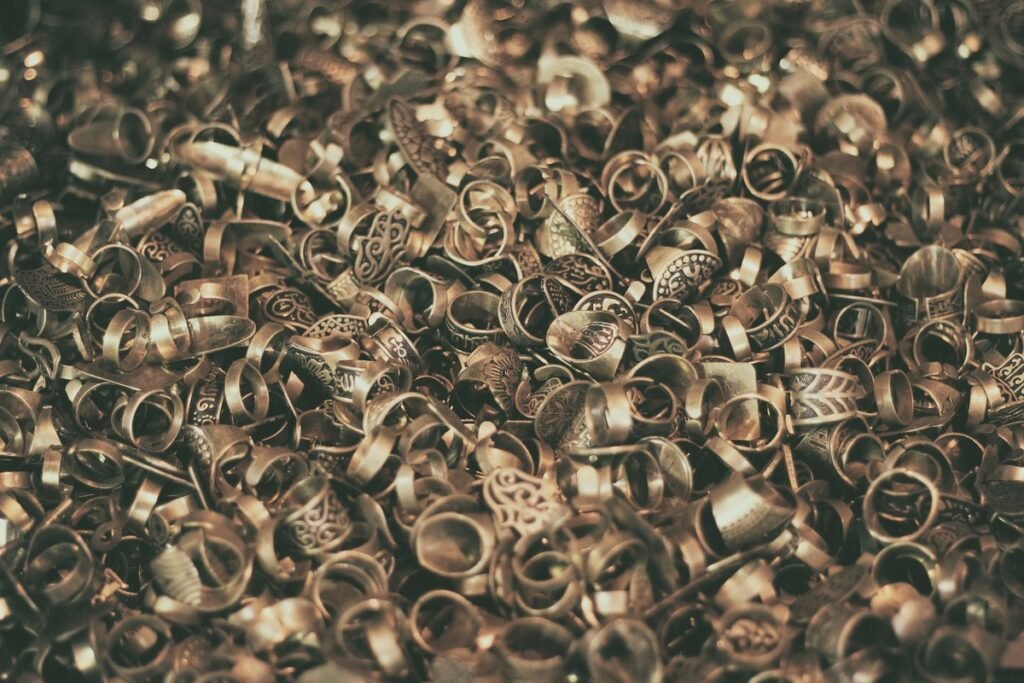When one thinks of fine jewelry, instinct makes two metals come to mind: gold and silver in that order. Gold still carries the reputation of being one of the most valuable metals in jewelry-making. Its classic appeal makes it an instant favorite, even if pure gold jewelry at 24K can make them more expensive.
What is the Most Expensive Metal Used in Jewelry
It’s good to have an eye for the precious metals you wear. However, if you want to deepen your taste for jewelry, the best way is to see how metals and stones work together. In addition, one should know what the most expensive metal used in jewelry is, as well as how it fares against the less expensive precious metals. Jewelry is only as good as the precious metal and stone it has. Before you start shopping and investing in jewelry, here are a few things to remember.
Ranking the Different Metals By Cost
Avoid the first but crucial mistake of assuming that all metals cost the same. Even similar metals may have very different prices. It can be due to other filler metals included in the mix of metals. It can also be the varied amount of a specific kind of metal in a product. Even jewelers have certain standards and follow practices when they choose which material is best used for jewelry specific to a need.
If you are not familiar with some of the metals on the list, it’s probably because they have been mixed in with the more precious metals. They could be fillers of certain combinations or the main ingredient to add winning qualities to the jewelry.
Palladium
If you are looking for rare and malleable, the best bet would be palladium. This rare metal is also stable in very high temperatures. In the jewelry industry, palladium can be found most often in white gold jewelry. Jewelry makers use palladium for plating, to lessen the scratches and tarnishing of the accessory.
Yet palladium has a number of bigger uses. At the moment, it has jumped in value, surpassing gold, because of a high demand in many industries. Since 2019, production of palladium has been short of meeting demands, especially with the rising need from the automotive industry. Jewelry makers use palladium to make their products more durable. In addition, it transforms the toxic pollutants in car exhausts so they become water vapor and less harmful substances.
Iridium
In precious metals, rarity often comes with a bigger price tag. Iridium falls under this circumstance. As a precious metal, iridium enjoys a dense makeup, making it corrosive to most factors like air, salts, water, and other acids. This makes iridium a good addition to the metals for frequently-used jewelry. When it comes to jewelry, iridium can be found in watches as well.
Ruthenium
Another metal that is classified under platinum, this precious metal is very hard and rare, so it can take the same wear and tear. Manufacturers use ruthenium for plating electronics. While platinum can be a great standalone metal for jewelry, ruthenium is better used as a plating metal.

Gold
More than being a versatile metal for a lot of uses, there is a certain sense of tradition when one uses gold. A lot of fine jewelry use gold because of its pretty and unique color that matches a lot of precious stones. Because it is a malleable metal, it is the perfect material to use for more complex and intricate settings.
Gold’s versatility makes it useful in other areas beyond jewelry. It becomes the main ingredient in technical equipment, including electronics and thermal insulation. This is what makes this metal a very popular investment for jewelry buyers and the larger industry.
Platinum
Jewelry buyers have come to love platinum as a metal for their accessories because of the value it brings. If you think having gold jewelry is a luxury, having a platinum band suggests that your tastes fall in the discerning buyer who wants a rarer piece. Because of this, platinum has become one of the four precious metals that are often a household name in jewelry-making.
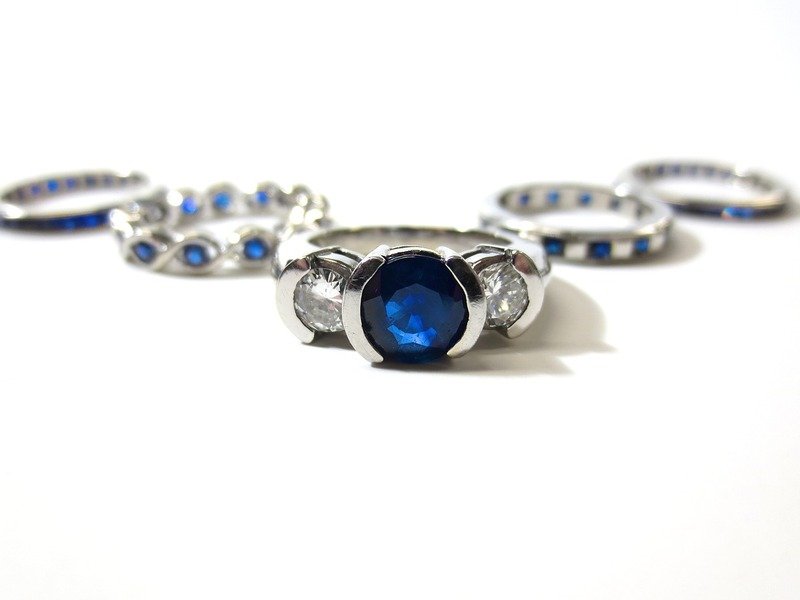
Silver
Just because silver is second only to gold does not mean it is not a popular choice. Most of the accessories used beyond fine jewelry–think of buckles and everyday bangles–make use of silver. Silver is more affordable as a popular metal for jewelry, even when using 90% pure silver or sterling silver. However, as an investment, the price can fluctuate more. Before selling your silver jewelry, it’s best to really see the market movement so you can get the best value. Always keep this in mind, especially when buying jewelry online.
Rhodium
Any customer who has been looking for a durable white metal accessory may know of rhodium. Many jewelers use rhodium for plating in the same way as platinum. Rhodium’s high reflectivity and durability make it one of the more expensive precious metals.
Jewelry makers choose rhodium for plating white and silver jewelry that face a lot of wear and tear. These include wedding and engagement rings, to make them resistant to scratching and less likely to tarnish. However, note that jewelry can still fade if rhodium is used more as plating, especially if one does not know how to properly take care of jewelry.
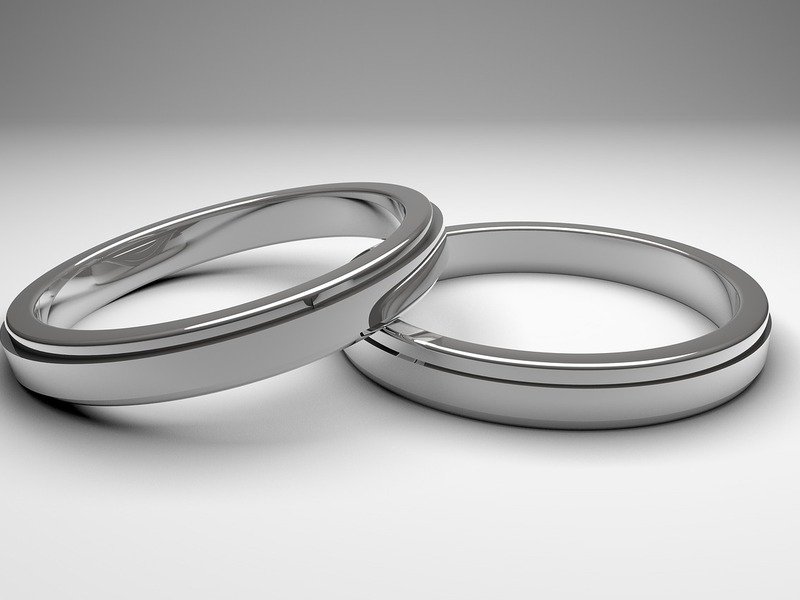
To date, rhodium price remain the highest when it comes to precious metals. It enjoys the same spotlight as palladium, especially due to its rarity. While many jewelers add it to jewelry, it sits on a rather high trading price rate on the ounce.
The most recent analysis puts its price somewhere around $13,000 per troy ounce making it one of the hottest trades around. The automotive industry added to rhodium’s price surge, which was a whopping 30% compared to last year. It also held the record of the most expensive metal in the world 2019.
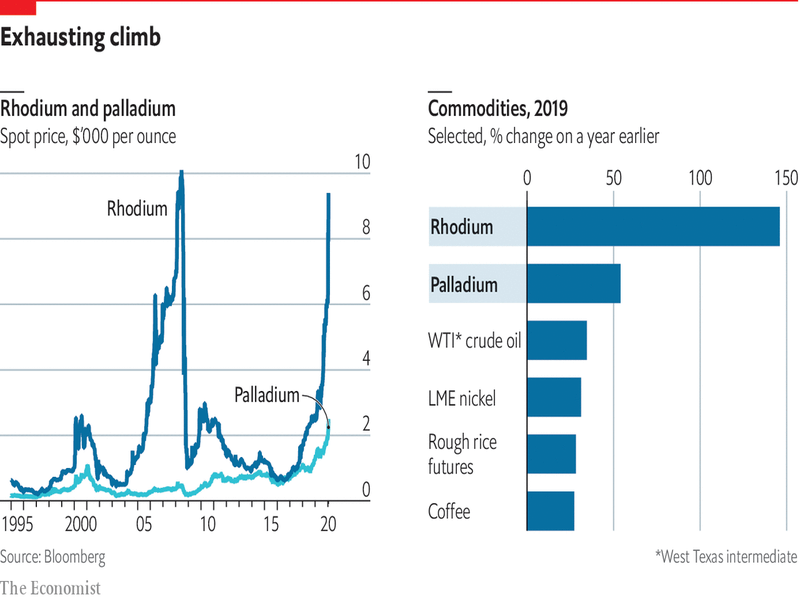
Source: The Economist
How to Spot Expensive Metal in Jewelry
In buying jewelry, one cannot rely only on knowing what the most expensive metal for jewelry is. It’s just as important to have an eye for precious metals, especially if you are shopping at a thrift store. Here are a few ways to improve your eye for precious metals.
Check Your Jewelry’s Weight
As a rule of thumb, real precious metals should be heavy. When shopping for jewelry, consider weight as a major factor for authenticity. Some traditional jewelry hunters enjoy personally going from shop to shop so they can assess the weight of the jewelry themselves.
Platinum, which is one of the most expensive metal in the world, can sometimes weigh heavier than gold depending on its density. When comparing their weights per gram, platinum remains heavier than most gold carat weights. The lower the carat weight of gold, the heavier it is in comparison to platinum. Note that even fine gold is still 11% lighter compared to platinum.
If you examine the jewelry on-hand, one can feel a substantial heaviness between a platinum wedding band and an 18-carat gold band. So when one is asked, “What metal is more expensive than gold?” always go for platinum as a safe bet.
Look For Hallmarks and Stampings
Jewelers make buyers know the kind of metallic content included in the piece of jewelry through hallmarks. Stamped letters indicate the kind of metal used. K stands for karat in gold. Plat or Pt indicates platinum content in the metal.
Sadly, depending on the maker and the country of origin, some jewelry pieces do not have hallmarks. However, this does not mean they are fake or have questionable legitimacy. Some countries do not require hallmarks in jewelry. In other cases, the jewelry may already be considered used jewelry or heirlooms, so markings may not be available.
No hallmarks may suggest that a semi-professional created the jewelry. The jewelry industry continues to grow, and with it comes the influx of more creatives. Emerging jewelry brands and makers continue to flock the market, bringing their own takes on jewelry. Note that if this is the case, the jewelry may be more likely to contain silver than precious metals like gold or platinum.
Gemstone setting
The most expensive metal used in jewelry, along with other fine precious metals, often make use of gems in addition to their designs. Aside from checking for proper weight and markings, you may also find clues in the gemstones included. For most jewelry makers, they will add gemstones to gold or platinum rings. Very rarely can one find precious stones set in silver.
While there are some silver rings and pendant necklaces that have stones, note that these are the less precious ones. Some of the common ones set in silver jewelry include turquoise, obsidian, and amber.
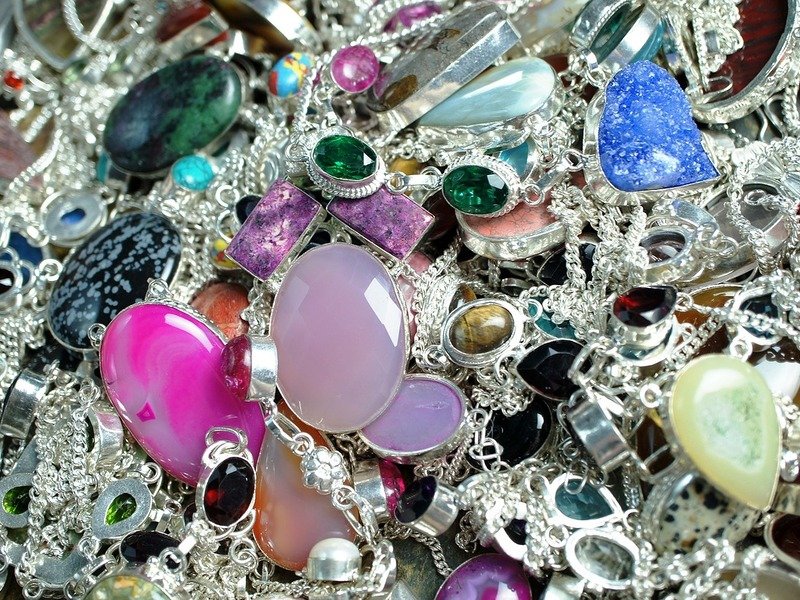
How to Spot Legitimate Jewelry Sellers Based on Precious Metals
Having the most expensive metal price in one’s arsenal or standard collection does not always equate to quality jewelry. At the same time, lesser metals, like silver, as one’s specialty does not mean a person does not have the right qualifications as a jeweler. When you look for the right jewelry for your collection, consider these factors before clicking on that buy button.
Intricate Silver Setting and Design
Despite being the less expensive version of white gold and platinum, one cannot discount the benefits of wearing silver. For one, silver jewelry has a lot of health benefits one can get just by wearing them. Silver reportedly helps in fighting infections, aiding wound healing, and saving its wearers from toxic substances. The latter best occurs when one wears a silver ring. When one touches a particular object with known toxins, the silver is likely to react and change colors to signal the presence of the toxin.
Having a favorite silver jewelry can also be beneficial if you have issues with your sodium. Any silver jewelry that turns blue after a period of consistent wearing suggests possible elevated sodium levels. While significant tests can prove these, having silver handy does have an unspoken and extra advantage.
Handling Silver Takes Experience
Just because silver is not the most rare metal does not mean just about anyone can handle it. In fact, creating silver jewelry requires silversmithing skills and good control of heat. Silver conducts heat better than gold, so one needs to know how to properly solder the material. Part of this is knowing how to properly control the metal once soldered and having the skills to carve out intricate designs.
People with silversmith skills tend to be proficient in creating gold jewelry. For starting jewelry makers, working with silver may carry its share of headaches. The end product, however, is both a great metal to work with and a good training ground to build skills. Sellers who work with silver will need the right skills to give you quality jewelry.
Spotting Good Gold Pieces
Scouting for gold jewelry may be a lot harder, especially with plating and fillings now available. When confronted with these factors, a good rule to follow would be to scout for the brand’s reputation and adherence to proper jewelry standards.
Because gold still ranks as one of the more expensive jewelry, some create counterfeit products with less capital. The first order of authenticating gold products, therefore, is to make sure that your bands or bangles are real.
If you already have some gold pieces at home that you want to check, there are two ways to do so. Use iodine and put it on a piece of Q-tip. Iodine causes base metals to stain when they come into contact. If your gold jewelry stains with iodine, then it’s not pure or close to pure. Darker stains mean more saturated metal content. You can also use vinegar to see if the gold will darken. Darkening indicates fake gold or an abundant amount of base metals and other alloys in the jewelry.
As a bonus, you can also check the authenticity of platinum jewelry by using ammonia. Put some ammonia on Q-tip and run it across the surface of platinum jewelry. A blackened surface indicates more base metals in the jewelry.
And we’re done here; hopefully, this article has answered the question–what is the most expensive metal used in jewelry? By now, you may be ready to go on a hunt for your coveted piece. Just keep in mind that jewelry need not be expensive. Always consider your style when purchasing an accessory. Also, don’t go for the first sparkling thing that you see. Get on a jewelry store hopping spree, until you find what you’re looking for. But if you’re not up to it, you can also opt to buy gemstones and jewelry online.
